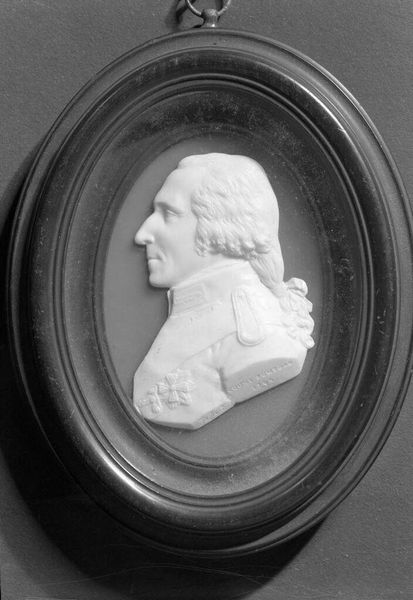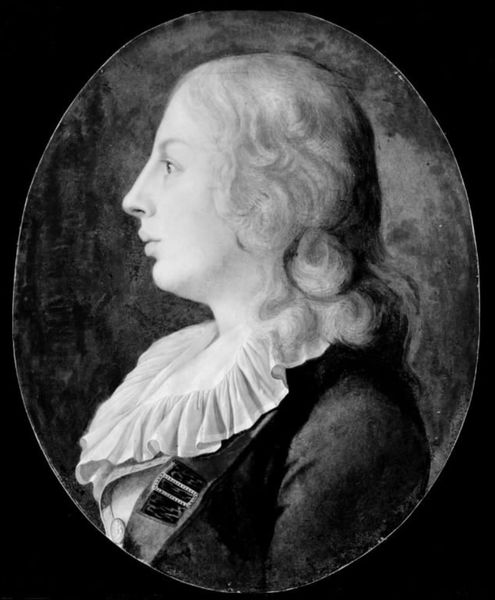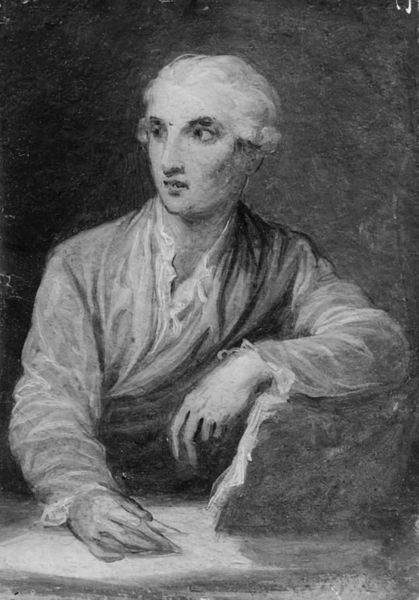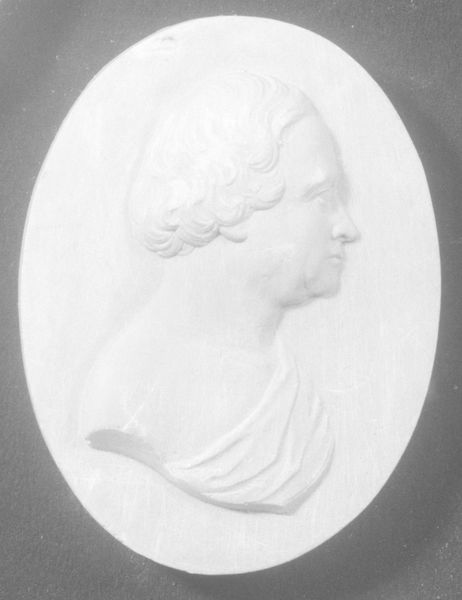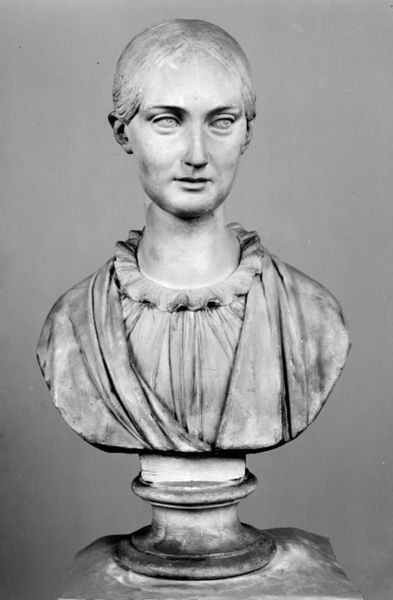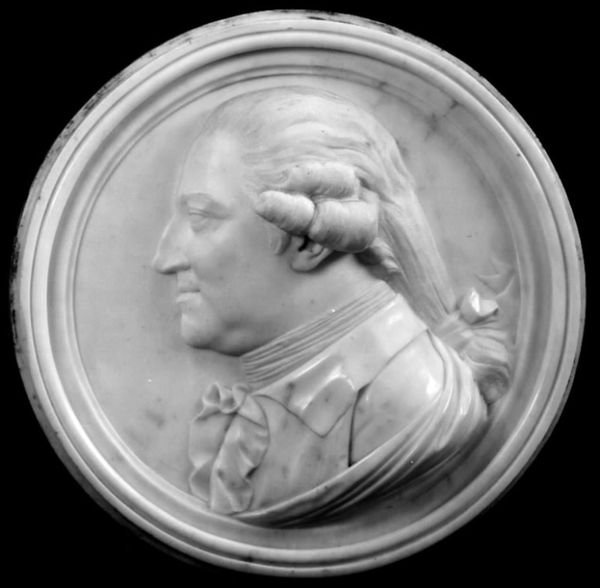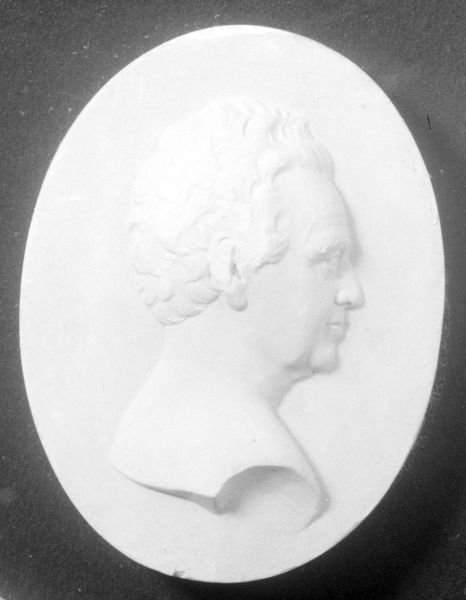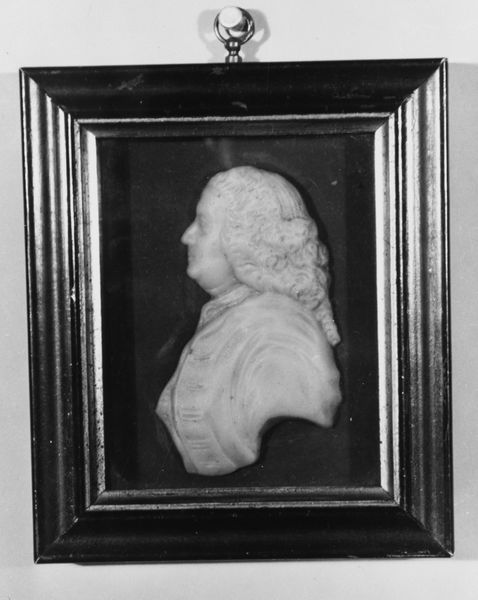
sculpture, plaster
#
portrait
#
neoclacissism
#
sculpture
#
sculpture
#
plaster
#
statue
Dimensions: 48.5 cm (height) x 37.5 cm (width) (Netto)
Curator: Here we have Jens Juel's plaster sculpture, "Skuespilleren Frederik Schwarz," dating from around 1760 to 1802. What's your first take? Editor: It’s incredibly austere. The severe profile, the muted tones...there’s a distinct formality. It feels like a preserved moment, rigid but carefully crafted. Curator: Indeed. Juel was a master of portraiture during the Neoclassical period. The clean lines and emphasis on idealized form are typical of the era's interest in classical antiquity. Think of it as citizen Schwarz elevated through art to a timeless hero. Editor: And the choice of plaster supports that. Plaster casts were relatively inexpensive and allowed for copies, democratizing access to the image of this notable person. I'm curious about the labor involved – who prepared the plaster, who cast the sculpture? These processes are integral to understanding its creation. Curator: Those questions are important. Schwarz, as an actor, held a certain cultural sway, and portraiture, especially in sculpture, was a tool for solidifying reputation and status. This wasn't just a likeness; it was a carefully constructed image for public consumption. Editor: Exactly, an image mass-produced via the material properties of plaster! Consider the network it represents: the quarries where the raw material was mined, the artisans who processed it, and the artist who molded it. All this for an actor to immortalize his performance, using art to market a specific role. Curator: But it is more than just a reproduction isn't it? It's a permanent record, a way of placing Schwarz within a lineage of respected figures, a visual connection to the ideals of civic virtue that were so prized during this time. It's political messaging, subtly embedded in the very material. Editor: Yes, and that messaging is carried by the materiality. The fragility of the plaster contrasts with the permanence it strives for, reflecting the fleeting nature of performance and reputation itself. There's tension between the intention and the reality. Curator: Food for thought. Looking at it through the lens of artistic skill, material constraints, and cultural ambition gives one a great deal to unpack. Editor: Absolutely. Seeing how material processes influence social dynamics brings a completely new layer to the viewing experience.
Comments
No comments
Be the first to comment and join the conversation on the ultimate creative platform.


